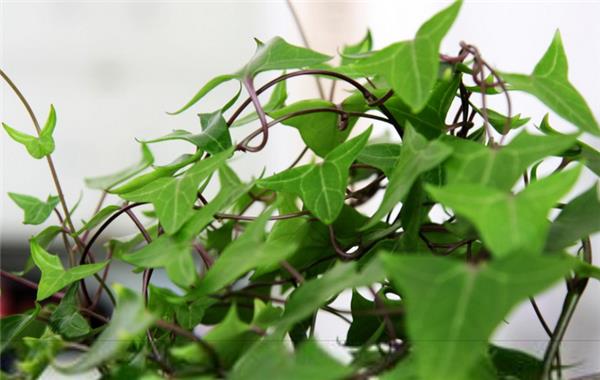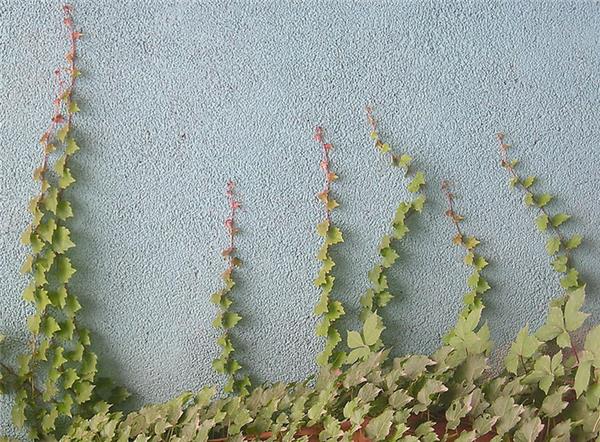Culture methods and matters needing attention of Ivy
Ivy is now a more popular indoor potted plant, the most common is placed in the wider living room, study and bedroom, giving people the feeling of elegance and simplicity. It is a beautiful, neat and world-famous new generation of indoor foliage plants. Its advantage is that it can purify indoor air and absorb harmful gases emitted by furniture and decoration. And it has a strong adaptability to the environment. Like the cooler climate, strong cold resistance, can also be used as medicine. I believe that if you see so many benefits, you will think that it is very difficult to breed! As a matter of fact, it is wrong. Let me tell you some methods and matters needing attention in breeding it.

I. Culture methods of Ivy
1. The temperature should be suitable. Ivy is more warm in habit, and the suitable temperature for growth is 20 ℃-25 ℃, so it is best to keep it indoors. And attention should be paid to the circulation of air and the suitability of temperature in summer, and the lowest temperature should be kept at 5 ℃ in winter. Of course, it can generally be kept at 10 ℃.
2. The illuminance should be moderate. Only in this way can we ensure that the leaves are consistent in shape and bright in color. But also avoid direct glare, because too much bright light can cause sunburn.
3. Watering should be appropriate. In the growing season to see dry and wet (that is, do not let the basin soil too wet, also can not be too dry), if too much water will have rotten roots and fallen leaves. Especially in winter, the temperature is on the low side, so it is especially necessary to control watering, as long as the basin soil is a little moist.
4. Reasonable fertilization. When cultivating ivy at home, the basin soil can be made of rotten leaves or charcoal soil mixed with 4 river sand and a small amount of bone powder, and thin pancake fertilizer and water can be applied once in 2 to 3 weeks in the growing season. General summer and winter do not apply fertilizer, fertilization should also be careful not to choose to apply nitrogen fertilizer. When fertilizing, we should also be careful not to defile the leaves, so as not to cause the leaves to scorch.

II. Matters needing attention in Ivy Culture
Ivy is adaptable and has no special requirements for environmental conditions. Ivy is a typical negative vine, which can not be exposed to strong light, can tolerate dampness, drought and barren, and grows well in fertile and humid sandy soil. Avoid alkaline soil.
Ivy is suitable for cultivation in the courtyard and potted plants. When potted, we should pay attention to shading in summer and overwintering in winter. Keep the basin soil moist during the growing period, do not be too dry, and pay attention to ventilation. It is advisable to apply thin and dilute fertilizer, which can be applied 2 times a year. If too much fertilizer is applied, the beautiful characteristics of the plant will be lost. When planting, heavy pruning should be carried out to promote more germination and branches. After that, a proper pruning will be carried out every spring to truncate the main vine to control its overgrowth. Pay attention to ambient ventilation at ordinary times. Ivy generally does not suffer from diseases and insect pests.
Ivy is often propagated by cutting or striping, or by seed propagation. As the ivy is easy to reproduce and survive, the simple and easy insertion method is often used. The insertion can be carried out in spring and autumn. The method is: take one-year-old branches, cut into a section of 10 Mel 15 cm long for stable insertion, with leaves at the upper end; insert about 5 cm deep into the slotting bed, pay attention to shading, and keep the slotting bed moist, generally half a month to; every month can take root. When transplanting, pay attention to let its roots carry soil, so that it is easy to survive.

III. The role of Ivy
1. Ornamental and eye-pleasing
Ivy is most commonly used in outdoor walls or courtyards, or in indoor hanging baskets, wherever they are as vigorous as geckos, climbing like cobwebs, and we see a green article every late spring and summer. Its leaves like maple leaves, every florescence will also open yellowish white flowers, very beautiful and fresh, it has become a popular green ornamental plant. Whether in the outdoor environment or indoor can bring a green, bring hope, especially in the indoor is very pleasing to the eye of the green plant, can play a role in decoration and beautification.
2. Fresh air
It can improve the natural force and freshness of the host's living environment. And it is also a very healthy and environmentally friendly ornamental plant, it can not only green the environment, but also purify the air, absorb indoor waste gas and release oxygen through photosynthesis and many other functions.
3. The meaning is beautiful
Speaking of ivy, people will think of green plants and ivory towers that represent knowledge. Famous American universities are called the Ivy League. When it comes to ivy, we think of words such as youth, youth, hope and vitality, not only the emerald of its appearance, but also the flower words that people give it infinite youth. it seems that it only belongs to young people and their time and their pure friendship and love on campus.

Ivy is a common potted plant in home now, its vitality is very exuberant, green, and it will open small flowers with high appreciation value, which is good for the purification of indoor environment. I hope it will be helpful for you to choose indoor plants.
Ivy is a common potted plant in home now, its vitality is very exuberant, green, and it will open small flowers with high appreciation value, which is good for the purification of indoor environment. I hope it will be helpful for you to choose indoor plants.
- Prev

Control methods of apricot diseases and insect pests
Control methods of apricot diseases and insect pests
- Next

How does the wonderful azure mushroom distinguish poisonous mushrooms from non-poisonous mushrooms
How does the wonderful azure mushroom distinguish poisonous mushrooms from non-poisonous mushrooms
Related
- Wuhan Hospital Iron Tree Blooming Result Was Instantly Frightened by the Gardener Master
- Which variety of camellia is the most fragrant and best? Which one do you like best?
- What is the small blue coat, the breeding methods and matters needing attention of the succulent plant
- Dormancy time and maintenance management of succulent plants during dormancy
- Minas succulent how to raise, Minas succulent plant pictures
- What are the varieties of winter succulent plants
- How to raise succulent plants in twelve rolls? let's take a look at some experience of breeding twelve rolls.
- Attention should be paid to water control for succulent plants during dormant period (winter and summer)
- Watering experience of twelve rolls of succulent plants
- Techniques for fertilizing succulent plants. An article will let you know how to fertilize succulent plants.

